|
CHINA |
|---|

Portrait of the Red Emperor Shen Nung (2838 - 2698 B.C.)
The origin of the Chinese pharmacological book "The Herbal" (also known by various other names) has been lost in history and is now the subject of numerous myths and legends. The most colorful one is that sometime around 2500 BC the Red Emperor himself (via divine inspiration) wrote the Pen Ts’ao or The Herbal, still in use today by practitioners of Traditional Chinese Medicine. Note that Shen Nung is traditionally cloth in a garment of herbal leaves.
MEDICAL CANNABIS AND CHINESE HISTORY:
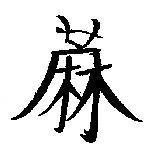
As China has been using a written script for over 4,000 years, one might think that documenting their historical use of Medical Cannabis would be an easy task. However, from a historian’s standpoint, this has proven to be one of the most challenging of sections yet attempted. Granted, were our purpose here simply to establish or document the Industrial uses of the Hemp Plant (as a source of food, cloth, oil, paper etc.), due to the vast amount of archeological evidence, this indeed would have been an easy task.
But what about its medical uses? Recalling that our main purpose here is not simply to repeat what other websites are saying; ---But to actually present the reader with first hand documentation. Actual proof (not just here-say) that such and such actually occurred. Something that (say) a newspaper reporter would feel comfortable using as a source of information for their stories. And this is proving to be no easy task. For example, according to the "Yearbook [1913] of the United States Department of Agriculture"
“EARLY CULTIVATION IN CHINA”Alright, we trust that the reader can agree that there are some inaccuracies with the above statements (actually there are a lot of inaccuracies), but here sticking solely to the medical issues. Note the last two sentences, ----“no record that they have used the plant for the production of the narcotic drugs . . . The production and use of these drugs were developed farther west” ---- Brings up an important question --- Why the dis-information or at least lack of knowledge, on this very vital bit of knowledge regarding the plant. Were this to have been written during or after the Reefer Madness era, the answer would be quite obvious, but note the date -- 1913.
“Hemp was probably the earliest plant cultivated for the production of a textile fiber. The “Lu Shi,” a Chinese work of the Sung dynasty, about 500 A.D., contains a statement that the Emperor Shen Nung, in the twenty-eighth century B.C., first taught the people of China to cultivate “ma” (hemp) for making hempen cloth. The name ma occurring in the earliest Chinese writings designated a plant of two forms, male and female, used primarily for fiber. Later the seeds of this plant were used for food. The definite statement regarding the staminate and pistillate forms eliminates other fiber plants included in later times under the Chinese name ma. The Chinese have cultivated the plant for the production of fiber and for the seeds, which were used for food and later for oil, while in some places the stalks are used for fuel, but there seems to be no record that they have used the plant for the production of the narcotic drugs bhang, charas, and ganga. The production and use of these [pharmaceutical] drugs were developed [by other nations] farther west.“ ----“Yearbook of the United States Department of Agriculture” 1913 p288 [MORE]
This confusion is caused, at least in our opinion, because unlike their ancient Egyptian counterparts which produced numerous medical papyrus scrolls, each one written by a different author, with different prescriptions etc. The ancient Chinese seemed to have had at least two cultural problems which are now causing no end of problems for present-day historians:
-
1- First, the Chinese seem to have had a “rather unique way of dating historical works.” Which is a nice way of saying that no one ever wrote down exact dates, thus we have no exact way of knowing exactly what was written when. Thus the only way we have of dating their works is by references made to Emperors, events or other famous persons.
2- Next, they also seem to have had no respect for copyright protections of any kind, and seemed to have no problems simply taking some other authors work, and sandwiching it between their own writings on medical theories.


The She King, itself, consists of numerous poems, about beautiful women, lovely flowers in a garden etc. Of interest to poet’s and students of Chinese culture, but also contains numerous references to Industrial Hemp that are of interest to us. Granted, that no one really knows exactly who wrote what, nor exactly when. And most scholars agree that it probably has numerous authors; one after the other, each taking poems written by others and then adding too or modifying them to suit his/her own needs. However, it still serves to document that the Hemp Plant was cultivated way-back-when.
 |
|---|
Of more interest to us is the Chinese Medical Book, “The Herbal,” which is said to have first been written about 2,500-BC, based of previous medical knowledge which could date back to 4,000-BC. And although every scholar of Chinese history acknowledges this as a fact, to our great regret no known original text exists or at least nothing that we can perform a carbon dating test on. In fact the present day version, (as we know it) was not actually put together until sometime around 50 AD.
Chapter 3.8.2 -- Medical Cannabis and Chinese History: A TIME LINE:
Maybe here it is best to look over a very basic time-line of Chinese medicine. But be aware, that there is a some debate among scholars as to what happened when, so don’t take the exact dates to seriously and ignore the obvious contradictions.
Pre-3,000 BC - [PRE-WRITTEN HISTORY]
For obvious reasons nobody was writing anything down back then and thus very little is actually known about this time-period. Medicine seems to have been in the hands of local hags (older women of wisdom), shamans etc. And from what we can tell, included a lot of faith-based healing (driving out the evil demons etc.), but would also have included herbal medicines. Knowledge of which would have been passed down, via the oral tradition, from mother to daughter etc. If the legends are true, Shen Nung (the father of Chinese medicine), and later on Huang Ti were said to have taken much of his knowledge from this time-period. As for the use of Medical Cannabis itself, while we have no solid proof, but given China’s geography, it seems almost impossible that the hemp plant would not have some-how found its way down from the Himalayas (where legends claim its origin), into what is now China proper.
“3,000 -to- 2,000 BC - A TIME OF LEGENDS:
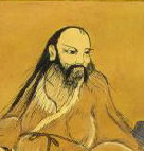 Fu-Hsi |
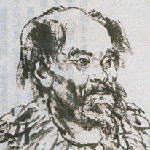 Shen Nung |
Huang Ti |
But whether one thinks of these celestial beings as UFO types, single or groups of individuals is irrelevant. What is important is that before the Celestial Era, everyone agrees that Chinese culture as we know it, DID NOT EXIST. After the era, it did.
Yet all that we know about this era comes from these legends, no original books or manuscripts from that era are known to still be in existence. All we have are reprinted versions that were rewritten many, many years after the fact. Thus maybe it would be best to take things with a grain of salt, but still most legends contain some elements of the truth in them. On the other hand however, if the legends are not true, then where did the ability to read and write, or for that matter so many other achievements come from? Most legends have some truth to them maybe its best, if one cannot accept to at least know about them.
Fu Hsi (2852-2738 BC):


The earliest Chinese character writing is said by some to have started-up somewhere around this time. Ancient legends claim that it was one of the founders of China’s Middle Kingdom, the Emperor Fu Hsi who either ordered or himself invented the first form of character script. Thus one can say that (Chinese) written history (including the first medical textbooks) began during his reign. However, it should be noted that most Chinese scholars believe that it would not be until (about 1500 BC) that the present system of Chinese characters would come into existence.
 MEDICINE AND THE YIN, YANG
MEDICINE AND THE YIN, YANG

Fu Hsi From a medical standpoint (in addition to making medical textbooks possible), legends also say that it was Fu Hsi (although the other celestial emperors also had a hand) who originated or conceived the concept of the YIN and YANG. A concept very similar to that of Galen’s humours; the concept that the human body had to be maintained in perfect balance. But unlike Galens humours (Earth, wind, fire, water), the concept of Yin Yang was centered around the concept of the male and the female. --- The YIN being the negative feminine influences whereas YANG represented the strong or positive masculine influences. Health lay in maintaining a balance between the two and illnesses resulted from unbalances. Thus, at least in part, the idea of ALL herbal medicines was to help keep that balance. Medical Cannabis because it contained qualities of both the yin and the yang would have found extensive use. However, since the female plant produced much more of the active medicinal substance than the male plant, its use became dominant. Medical (Yin) Cannabis was used to cure (or restore the bodies balance) for pretty much the same things it would come to be used in the West, menstrual problems, gout, rheumatism, senility etc |
|---|
Shen Nung (2838 - 2698) -- [THE RED EMPEROR]

Throughout all of china, he is known as the Father of Chinese Medicine, and as emperor was supposed to have ruled over China for over 140 years. While known as ‘The Red Emperor’, perhaps ‘The Green Emperor,’ note that he is usually portrayed wearing a coat of green leafs, would have been more appropriate. Today (in Chinese medicines) he is considered the patron of all herbalists and apothecaries as well as the author of The Great Herbal. A book which, while probably modified from it original version, is still in use today, by practitioners of Traditional Chinese Medicine.

(aka) The Great Herbal
The Pen Ts’ao The Materia
Medica Sutra . . . etc. . . .
The origin of the Chinese pharmacological book "The Herbal" (shown here under one of its many Chinese names ‘The Pen Ts’ao’, has been lost in history and is now the subject of numerous myths and legends. The most colorful one being the one that the Red Emperor Shen Nung (2,000 BC) was its originator. But WARNING: No actual pre-50 AD, original copies of Shen Nung’s ‘The Herbal” are still known to exist. The earliest known copies (something that can pass a radio-carbon dating test), are only approximately 2,000 years old, written sometime around 50 AD. However, logic dictates that it would have been impossible for such a book (which literally lists hundreds of herbal medicines), to have simply sprang up overnight. It obviously was taken from historical sources and additionally these editions are said to acknowledge their actual origin.
 |
|---|
Huang Ti (2698 - 2205) - The Yellow Emperor:[5]
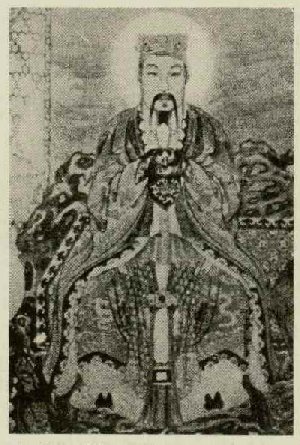
According to one book:Which given the number of years that he lived, (according to the legends well over 400), seem to imply some sort of supernatural life.[2] But probably his most famous act was the authorship of the Nei Ching or Cannon of Medicine also referred to as the Yellow Emperor's Inner Classic. [also spelled/translated as]
“The Yellow Emperor, Huang Ti, was himself 'a perfectly accomplished spirit' who was said to have invented the wheel, writing, ships, armor, the nine needles of acupuncture and many other scientific advances. His wife is credited with showing the Chinese how to rear silkworms on mulberry leaves to make silk.”
Nei ching or Nei Jing, or Net Jing
The Internal Medicine
The Canon of Internal Medicine
The Chinese Canon of Medicine
Which seems to consist of two parts:
-
Part 1 - The Su Wen (or Plain Questions, or Simple Questions), is a dialogue between the Yellow Emperor and his minister of medicine, Chi Po on various medicine topics.
Part 2 - The Ling Shu (or The Miraculous Pivot, or Spiritual Axis), constitutes a treatise on Acupuncture and is a required reading for students of Oriental Medicine.
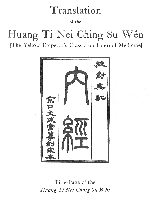
For the most part the book consists of a back and forth dialogue between the Yellow Emperor and his minister of medicine, Chi Po on various medicine topics. -- Example:
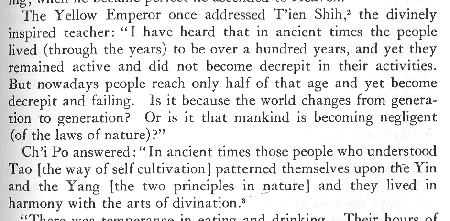
2350 BC - The Book or Odes or She King, a book of Chinese poetry, containing numerous references relating to Industrial Hemp, is said to have had its origins at around this time.
2200 - End of the Celestial Empire - Again, there is very little (if any) archeological proof the Celestial Empire existed in the first place. However according to the legends, for reasons unknown, it was around this time that it came to an end. Note that it would be around a thousand years until the first of the [document-able] Chinese dynasties would come into existence.
700 BC - Researchers say they have located the world's oldest stash of marijuana, in a tomb in a remote part of China. The cache of cannabis is about 2,700 years old and was clearly ``cultivated for psychoactive purposes," rather than as fibre for clothing or as food, says a research paper in the Journal of Experimental Botany.
For example:
“Physical evidence of ancient cannabis usage has been reported from the Yanghai Tombs in the Turpan District of the Xinghian-Uighur Autonomous Region in China. A large amount of cannabis radio-carbon dated to 2500 years ago was found in the tomb of a Caucasoid male, dressed as a shaman. . . . . This site and contents resemble those of other mummies of the Tarim Basin associated with [various] hemp artifacts. --- History of Cannabis and Its Preparations in Saga, Science, and Sobriquet by Ethan B. Russo [6]500 BC - Confucius:
The Chinese philosopher Confucius (~500 BC), while not being the author, is generally credited with compiling (from earlier editions) many of China’s literary classics. Including both the ‘Li chi’; Canon of Rites [dealing with cultural/religious rites], and the ‘She-King’; Book of Odes [a book of classical poetry]. Both of which contain various references (some dating as far back as 1,800 BC) to the cultivation and uses of the hemp plant.
218 BC - Chin Dynasty
Although short lived, this dynasty is best noted for its “Fires of Chin” in which many Chinese books were set on fire in an attempt to destroy the past. [Actually from a historical situation an all too common occurrence] Fortunately, for us, medical texts were excepted from the bond-fires, and thus the past knowledge about Medical Cannabis survived. It is said that China’s present day name is derived from the Chou dynasty name. -- [But note that it only took 16 years to get rid of that jerk Chin] [3]
221-207 BC - The Li Chi or Book of Rites is an ancient Chinese book of classical Confucian works written by his followers during the Qin dynasty (221 to 207 BC) and contains many detailed references to hemp. The Record of Rites describes the uses of hemp as the cloth of the peasant masses. Hemp textiles were common items of early Chinese culture used for many purposes throughout life, then, from swaddling clothes to funerary shrouds.
50 AD Regardless of whether such an earlier compendium did or did not exist, the important fact about this first-century herbal is that it contains a reference to ma, the Chinese word for cannabis.
190-AD HUA TUE To this day Hua Tue is known in China as ‘The God of Surgery’ and for good reason. Unlike all so many other almost mythical names throughout Chinese History, here is an individual whose existence and deeds are well established. He is best known today for his pioneering work in surgical anesthesia today known as ‘ma-fei-san,’ which translates loosely into ‘a bubbling wine’. And while we don’t know its exact formula - According to one book: “The prescription for this was lost because Hua Tuo incurred a ruler’s wrath and was condemned to death” [4] However, almost all historical scholars agree that Medical Cannabis was one of its key ingredients.
25 - 220 AD : The Medical author Zhang Zhongjing writes this duel classic(s):
- Treatise of Febrile Diseases Caused by cold and Miscellaneous Diseases (Shanghan zubing lun)
- Synopsis of Prescriptions of the golden Chamber (Jinkui yuolue fanglun)
“Clause 11-15; Floating pulse indicates strong Stomach vital Energy, whereas hesitant pulse indicates frequent urination. Conflict of floating and hesitant pulses causes constipation and Spleen Restriction. “Pills of Fructus Cannabis” will provide a cure.
Pills of Fructus Cannabis (Maziren Wan)
Fructus Cannabis 2 sheng
Radix Paeoniae 0.5 jin
Fructus Aurantii Immaturua 1 jin
Radix et Rhizoma Rhei 1 jin
Semen Armeniacae Amarum 1 sheng
It was under the Tang dynasty that China established its first Medical University or School of Medicine.” Note that this was almost a thousand years before the first equivalent Western Universities were established. And obviously, along with other herbs, the uses of Medical Cannabis would have been copiously taught at the school.
The Ming'i Pieh'lu, written by the famous physician T'ao Hung Ching in the 5th century AD, says that, "Ma fen is not much used in prescriptions (now-a-days). Necromancers use it in combination with ginseng to set forward time in order to reveal future events."
960 AD- Sung Dynasty
It was during this Dynasty that the creation of numerous Medical Universities (not just one or two) to train physicians began to come into fruition. Note that this would be over 400 years before Europe’s universities system would come into existence. No wonder that many medical prescriptions were finally standardized during this time.
1279 - Mongolian Dynasty
Zhu Zhen-heng [on inquiring into the properties of things] [ expounding the formulating of the bureau of the people’s welfare pharmacies] 1350 AD
Li Shi Chen (1517-1593) The Great Medical Textbook Writer:
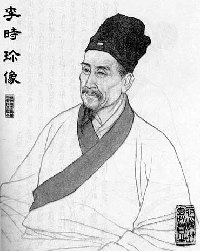 Although has early life was a total zero, (a real loser), his career took a turn for the better, when after flunking out on his Civil Service exams, he turned his attention to pharmacy. Today, he is probably best known for rewriting and updating many of the classical Chinese medical texts. Probably his most important work being a rewrite of the “The Great Herbal of Medicine” [Pen Ts’ao Kang Mu], which of and of itself was no small task.
Although has early life was a total zero, (a real loser), his career took a turn for the better, when after flunking out on his Civil Service exams, he turned his attention to pharmacy. Today, he is probably best known for rewriting and updating many of the classical Chinese medical texts. Probably his most important work being a rewrite of the “The Great Herbal of Medicine” [Pen Ts’ao Kang Mu], which of and of itself was no small task.
He not only took the original and modernized the language, but realizing that many of the older listed drugs if not inferior in value, out and out poison-ness, took many of them out, added new ones etc., etc. He’s version of the Pen Ts’ao, listed almost two thousand drugs (mineral, animal and herbal -- including Medical Cannabis] and is still in use today. His works were instrumental in not only modernizing medical treatment, but also helped to standardize numerous herbal drugs.
This great pharmacopoeia, which summarizes what was known of herbal medicine up to the late 16th century, describes in detail more than 1800 plants, animal substances, minerals, and metals, along with their medicinal properties and applications.
1644 -Manchu Dynasty:
It is during Manchu Dynasty that numerous western nations began re-establishing diplomatic and commercial ties with China. And along with the diplomats and traders, came scholars who soon began translating many Chinese classical texts, thus allowing Western medicine access to Chinese medical knowledge. Specifically, on matters concerning their knowledge and uses of Medical Cannabis.
1980 - Red China re-opens itself to the West:
Ever since the early 1930's due to war and conflict raging throughout China, and then the fall (or liberation) of mainland China, the West has had only limited access to much of China’s original literary classics. However, all that began to change in the 1980’s with the re-opening of China to the west. Led by a renewed interest in herbal medicines at the time, soon scholars, both westerners and Chinese, started to translate many of China’s older medical texts.
Unfortunately (one must assume) that due mainly to political pressures, much of those writings relating to Medical Cannabis have been somewhat censored. It seems that it is OK to write about the medical properties of (sterilized) Hemp Seeds, BUT NOT about the flowering tops. A situation that is now leading to some very embarrassing contradictions; for example, the emperor Shen-Nung was said to have prescribe medical cannabis for a variety of illness including beri-beri, constipation, female problems, gout, malaria, rheumatism and senility. OK, granted hemp seeds can be used to treat nutritional ailments such as beri-beri, as well as stomach illnesses, however rheumatism? senility? gout? I would like to see any kind of scientific evidence that Hemp seeds have any beneficial medical effects with regards to those sorts of ailments. The flowering tops, yes, but the seeds, NO.
Yet, almost all translations of Chinese herbals, both modern-day as well as ancient classics, contain virtually no mention of the medical uses of the flowering tops. The following, taken at random are representative:
-
Chinese Herbal Medicine Materia Medica
Mentions hemp seeds as treatment for:
Intestinal problems
Aftermath of colds (febrile diseases)
Post partum
Blood (nutritional) deficiency
Promotes healing of sores and ulcerations
Practical Dictionary of Chinese Medicine
Mentions hemp seeds as treatment for:
Intestinal problems
Nourishing the blood
Constipation
Dictionary of Traditional Chinese Medicine
Hemp Seed; Fructus Cannabis. The drug consists of the dried fruits of the Common Hemp, Cannabis sativa L. It is used as aperients for the treatment of constipation of the Debilitated or aged.
Atlas of Chinese Materia Medica
Hemp Seed is the dried ripe seed of Cannabis sativa L. -- [for] constipation due to deficiency of blood and intestinal fluid.
And then again, maybe there is, just look at the (recommended) medical uses listed, none of them take advantage of medical Cannabises active principles of the flowering tops, only of the hemp seeds themselves. -- Man tell me there is no censorship.
 |
|---|
HEMP evolution of the written form:
Like so many others, I’ve often wonder it the Chinese Character for HEMP is actually being written upside-down and Chinese people were simply to polite to bring up this fact and embarrass anyone. I mean, take a look at the character upside-down. Doesn’t it look a lot like the actual Medical Cannabis Plant; roots at the bottom, leafs and stock up on top.


Upside Down (left) --- Proper Position (right)
However, after checking with several (native) Chinese-speaking individuals, we have been assured that the figure is correct as is. It seems that written Chinese is not just a random collection of brush strokes but actually seems to have some sort of order to it. And for whatever reason, by convention grass is always depicted on top etc.
 |
|---|
Additionally the Chinese language also has the additional problem of being a tone-al inflected language -- Example; mA , MA , Ma , MmaA , could be for different words, but in English ALL have the same spelling.
 |
|---|
2.8.3 - CONCLUSIONS:
There is no doubt that the Medical properties of Cannabis have been in use by Chinese medical practitioners for a long, long time, possibly as far back as 4,000 DC. Granted the oldest original parchment scrolls known to still exist [something that can pass a carbon-dating test] only go back to 50-AD. Still these texts of-and-by themselves, almost universally claim to simply be redo-’s of much older works. Older texts that are said to pre-date (Chinese) writing, passed down from one generation to the next, via the oral tradition.
Additionally, we also have solid archeological evidence that Industrial Hemp (for cloth and or food) was being grown in China by around 1,500 BC. Thus making it hard to believe that it was also not being used for medicinal properties. And last of all, there is the factor of geography. Given China’s proximity to India and its Ayurvedic medicine system (which is even older then China’s), it again seems almost impossible for Chinese medical practitioners to have not taken advantage of the plants medical properties.
FOOTNOTES:
[1] - Traditional Chinese Medicine By Sheila McNamana pg 242
[2]- Although having nothing to do with the subject of this book, one can’t help but notice the similarities between the Three celestial emperors and that to the seven fallen angels found in the Biblical ‘Book of Enoch.’ Part of the Apocrypha or “the lost books” of the Christian Bible. “And Azazel taught men to make swords, and knives, and shields, and breastplates, and made known to them the metals (of the earth) and the art of working them, and bracelets, and ornaments, and the use of antimony, and the beautifying of the eyelids, and all kinds of costly stones, and all coloring tinctures. And there arose much godlessness, and they committed fornication, and they were led astray, and became corrupt in all their ways. Semjaza taught enchantments, and rootcuttings, Armaros the resolving of enchantments, Baraqijal (taught) astrology, Kokabel the constellations, Ezeqeel the knowledge of the clouds, (Araqiel the signs of the earth, Shamsiel the signs of the sun), and Sariel the course of the moon.”
[3]- Unfortunately it seems that burning libraries is (historically speaking) almost a human past time. Never forget that the great Julius Cesar is best remembered for burning down the giant library of Alexandria.
[4]- Traditional Chinese Medicine By Sheila McNamana page 244
[5]- Picture of the Yellow Emperor courtesy of The Herbal Tradition http://www.planetherbs.com/articles/HerbHist.html The Herbal Tradition http://www.planetherbs.com
[6]- For those interested the museum has a couple of good articles on the subject. Feel free to ask for them.
RECOMMENDED READING:
For those of you interested in the subject, the following articles are must reading:
Economic Botany Oct-Dec 1974 p437 “An Archaeological and Historical Account of Cannabis in China by Hui Lin Li
Economic Botany Jul-Sep 1974 p293 “The Origin and Use of Cannabis in Eastern Asia Linguistic-Cultural Implications” By Hui Lin Li
WANT TO KNOW MORE:
=====================
Due to space / download time considerations, only selected materials are displayed. If you would like to obtain more information, feel free to contact the museum. All our material is available (at cost) on CD-Rom format.
CONTACT PAGE
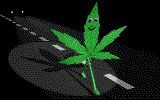 BACK TO CHAPTER 2 |
Chinese History On to the Next Section |